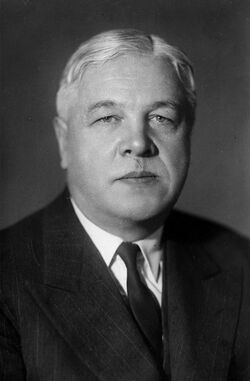Biography:Dmitri Skobeltsyn
Dmitri Vladimirovich Skobeltsyn (Russian: Дмитрий Владимирович Скобельцын; November 24, 1892 in Saint Petersburg – November 16, 1990) was a Soviet physicist, academician of the Soviet Academy of Sciences (1946), Hero of Socialist Labor (1969).
Dmitri Skobeltsyn was awarded the Stalin Prize (1950), six Orders of Lenin, two other orders, and numerous medals.
Starting in 1923, Skobeltsyn pioneered the use of the cloud chamber[1] to study the Compton effect.
As a result of this work, Skobeltsyn paved the way for Carl David Anderson's discovery of the positron by two important contributions: by adding a magnetic field to his cloud chamber (in 1925[2]) , and by discovering charged particle cosmic rays,[3] for which he is credited in Anderson's Nobel lecture.[4]
References
- ↑ Cowan, Eugene (November 1982). "The Picture That Was Not Reversed". Engineering & Science 46 (2): 6–28.
- ↑ Bazilevskaya, G.A. (2014). "Skobeltsyn and the early years of cosmic particle physics in the Soviet Union". Astroparticle Physics 53: 61–66. doi:10.1016/j.astropartphys.2013.05.007. Bibcode: 2014APh....53...61B.
- ↑ Skobeltsyn, D. (1929). "Uber eine neue Art sehr schneller beta-Strahlen". Z. Phys. 54 (9–10): 686–702. doi:10.1007/BF01341600. Bibcode: 1929ZPhy...54..686S.
- ↑ Anderson, Carl D. (1936). "The Production and Properties of Positrons". https://www.nobelprize.org/prizes/physics/1936/anderson/lecture/. Retrieved 10 August 2020.
External links
- Skobeltsyn's photo – from the Russian Academy of Sciences
 |


